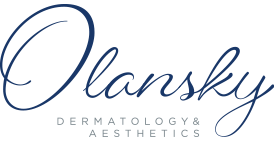Do you have patches of rough, dry or scaly skin? This could be a consequence of sun exposure called actinic keratosis. Actinic keratoses, more commonly called “sun spots”, is a very prevalent dermatological concern, but one that must be addressed. If left untreated, up to 10% of AKs develop into squamous cell carcinoma, the second most common form of skin cancer. Actinic keratoses is caused from ultraviolet (UV) rays, which means either sun exposure or indoor tanning can be the culprit.
What To Look For?
AK can take years to fully develop. In most cases, AK appears on sun-exposed areas of the skin, such as the neck, hands, face, ears, forearms and scalp. Those with fair skin and red or blonde hair are at a greater risk, as are those who live in a sunny climate and are chronically exposed to UV rays. The signs and symptoms of an actinic keratoses include:
• Rough, dry or scaly patch of skin, usually less than 1 inch (2.5 centimeters) in diameter
• Flat to slightly raised patch or bump on the top layer of skin
• In some cases, a hard, wart-like surface
• Color as varied as pink, red or brown, or flesh-colored
• Itching or burning in the affected area
If you notice any new lesions or skin changes, it is important that you visit your dermatologist sooner rather than later for a proper diagnosis and effective treatment plan.
How is AK Treated?
Your dermatologist will be the one to determine the best course of treatment for your actinic keratoses. Cryotherapy and chemical peels can be used to treat sun spots, but photodynamic therapy, or light therapy, is one of the most common and effective ways to address this condition. Photodynamic therapy (PDT) is a treatment that uses special drugs, called photosensitizing agents, along with light to kill abnormal skin cells. The drugs (which can be a photo-sensitive lotion) only work after they have been activated or “turned on” by certain kinds of light.
Olansky Dermatology not only offers a full spectrum of treatments for actinic keratoses, but we also educate our patients on proper ways to prevent this condition. Protecting your skin from harmful sun damage cannot be stressed enough – as it is undoubtedly a precursor to serious skin cancer.

